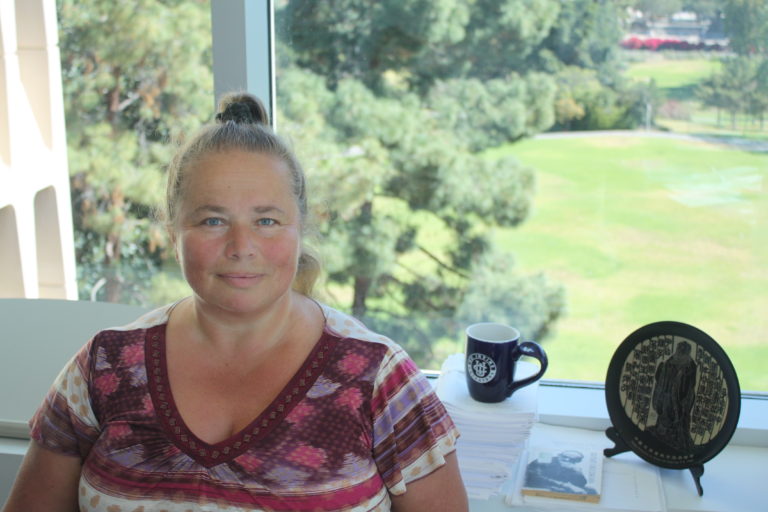
UC Irvine Distinguished Professor of Mathematics Svetlana Jitomirskaya has won the 2020 Dannie Heineman Prize for Mathematical Physics, UC Irvine officials announced yesterday. Jitomirskaya is only the second woman in the prize’s 60-year history to win the honor, and the first woman ever to win it alone.
“To say I am honored and humbled to receive this prize–to now be on the same list with so many of my absolute heroes–is a huge understatement,” Jitomirskaya said in this Oct. 22 UCI news release. “The prize is relatively rarely given to pure mathematicians like me; I see it as an indication of the physics community’s growing interest in the questions I’ve been working on–and perhaps math in general.”
The prize citation shows the extremely theoretical scope of her work:
“For work on the spectral theory of almost-periodic Schrödinger operators and related questions in dynamical systems. In particular, for her role in the solution of the Ten Martini problem, concerning the Cantor set nature of the spectrum of all almost Mathieu operators and in the development of the fundamental mathematical aspects of the localization and metal-insulator transition phenomena.”
For help in translating all that, I asked Professor Alfonso Agnew, who chairs the Mathematics Department at Cal State Fullerton, for his insight. Though this kind of math isn’t his specialty, and he had to sacrifice some accuracy to provide an explanation in less than 100 pages, he offered the following:
1. Many problems in science can be explained with non-relativitistic quantum mechanics (QM). QM describes the physics of the small (say, atomic scale and below) where the bodies involved are neither too massive, too energetic, nor moving too fast (relativity would then need to be taken into account). One formalism for doing QM uses the celebrated Schrödinger equation, which involves the use of “Schrödinger operators” to describe the energy content of the system under consideration. Different systems require different Schrödinger operators for their description. Thus, it is helpful to be able to understand as much as possible about various families of Schrödinger operators, since then we understand more about the physical systems that they are modeling, which in turn informs laboratory activity, technology and so forth. One family of operators are the “almost periodic Schrödinger operators,” that tend to come up often enough in applications to warrant special attention.
2. One can tell quite a bit about an operator by studying the geometric (or topological) properties of its “spectrum”—which is in some sense its geometric “skeleton” or DNA. The term “spectrum” is directly related to the physical spectrum of light emitted by atoms, which can be predicted by the mathematical spectrum of the operators describing the atom. This goes back to studies in the late 19th/early 20th century.
As for the “Ten Martini Problem” mentioned in the citation, that was one of 15 questions on quantum operators (mathematical representations of energy, position, things like that) first posed by the mathematician Barry Simon. The name itself comes from the reward the mathematician Mark Kac offered to whoever solved it. Sadly, Kac died in 1984, so he never paid up.
Anyway, if you’re really curious, click here to read the 2009 paper “The Ten Martini Problem” published in Annals of Mathematics that Jitomirskaya co-wrote with the Brazilian mathematician Arthur Avila. In 2014, Avila received the Fields Medal, an honor awarded to mathematicians under 40, partially based on this work.
“The work I do that this prize recognizes is in a rather narrow area, so it hasn’t had a fraction of the impact the work of some of my predecessors has had,” Jitomirskaya said in the Oct. 22 UCI news release. “However, it did have a considerable impact in that area, and the field itself is getting more and more attention because of its relationship to the science of quantum materials.”
Jitomirskaya was born in Kharkov, Ukraine and got her PhD in mathematics from Moscow State University. She has taught at UC Irvine since 1991.
Anthony Pignataro has been a journalist since 1996. He spent a dozen years as Editor of MauiTime, the last alt weekly in Hawaii. He also wrote three trashy novels about Maui, which were published by Event Horizon Press. But he got his start at OC Weekly, and returned to the paper in 2019 as a Staff Writer.

